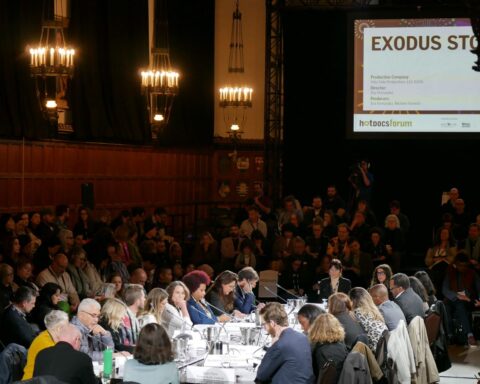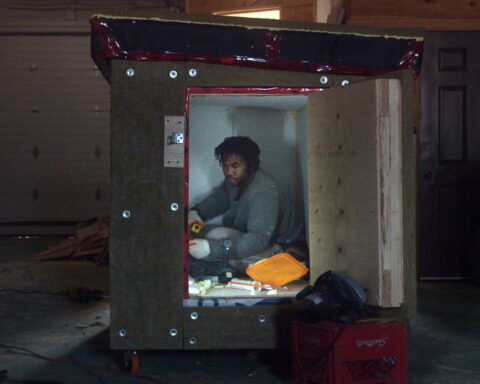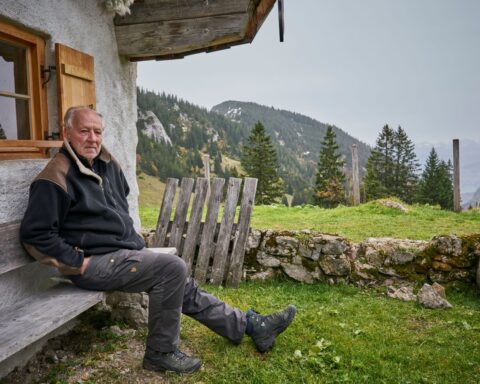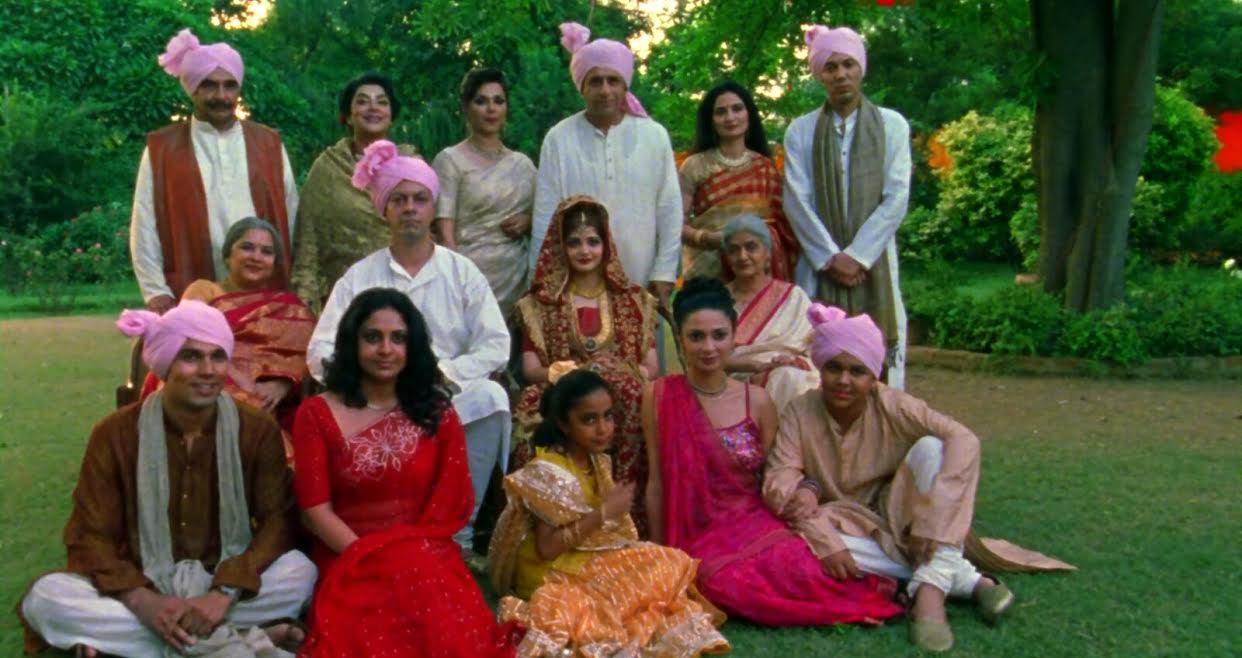The TIFF 2018 Documentary Conference, which segued like clockwork from one presentation to another, was wide-ranging, informative, and at times moving. The presenters and panels covered territory extending from tragic stories that get ignored by media to current trends in buying and selling documentaries to the challenges of shooting complicated nature docs in remote locations. The event, held in the CBC’s Glenn Gould Studio, opened on an appearance by Werner Herzog, whose fiction films and docs have startled audiences for the past 50 years.
Interviewed by TIFF programmer and creator of the Conference Thom Powers, (who also handled other sessions), Herzog delighted the audience with his maverick ideas, stories he told with cinematic sweep, and memories of filming his new doc, Meeting Gorbachev.
Herzog admires Gorbachev deeply for his individuality, sense of poetry, and, of course, historical importance as a peacemaking unifier who at the time did “unthinkable things” and still worries constantly about the threat of nuclear war.
Some of Herzog’s anecdotes, enhanced by selected clips, were object lessons in how documentary filmmaking can be an improvisatory art. He filmed Gorbachev without lists of questions, and at one point, his subject refused to sit still for a three camera, carefully lit set up. Gorbachev insisted on doing the interview in his office, too small for the heavy equipment. “It doesn’t matter,” said Russia’s former leader. “We do it without camera.” Amused by the absurdity, Herzog said he picked up a small camcorder and shot handheld.
Herzog summed up his view of documentary: “Facts do not constitute truth.” He tries “to find truth in a deeper way,” allowing films to take off in imaginative directions. “Sometimes outright invention brings you closer to an intrinsic truth” than mere facts. I’m looking for something that allows us to step outside of ourselves.” Similarly, Orson Welles thought that in film, the unreal and truth were in harmony. The Manhattan phone directory is loaded with facts, Herzog pointed out, but what does it tell you? “Get away from the phone directory and go into poetry instead.”
Surprising from the man who ranted and raved about the viciousness of nature in Les Blank’s Burden of Dreams, Herzog linked Gorbachev’s love for his late wife to his own feeling for his Russian wife as a blessed “25 years of honeymoon.”
Outside the Frame
Following Herzog’s appearance, Nermeen Shaikh, co-host of the US news program, Democracy Now! gave a sharply argued, impassioned talk about how some stories reach iconic status worldwide while others are ignored or shunted into the shadows.
Shaikh played dramatically on the fact that she was speaking on September 11, one of the most notorious and widely reported dates in history. The images that came out of the 9/11 attacks were so powerful, they “all but rendered verbal expression irrelevant.”
But other parallel, linked, and succeeding events, Shaikh continued, were as horrific and led to even more death and destruction. Thousands died in suicide attacks in Afghanistan, Iraq, and Pakistan. Her point: what is represented and what isn’t. “What is the role of image here and what of narrative?” she asked. “As we all know, to document, and to frame is also to exclude.” Where are the images of “the many horrors that this event inaugurated … in places of the world incapable of generating comparable iconic status?” The places she calls “outside the frame.”
The people behind Democracy Now! “strive to represent individuals and groups who have been structurally excluded” and films made about them, films that are more about narrative than “spectacular visuals.”
What about the non-professionals documenting on social media like Whatsap and Facebook, I asked. Yes, Shaikh answered. That is a kind of breaking news, which can be consulted by filmmakers who offer wider distribution of stories.
And POV’s Marc Glassman asked where does the money come from, where are the films shown? “We need more money, more independent media,” Shaikh said. “It’s about “perseverance and luck.”
The Big Sell
Perhaps in deliberate contrast with Democracy Now!, Shaikh was followed by hard-core facts about the packaging and selling of documentaries. Thom Powers moderated a panel consisting of top American players. Amanda Lebow packages and sells for Creative Artists Agency (CAA); Endeavor’s Kevin Iwashina handles sales and provides advisory services for media companies; packager and financial specialist Rena Ronson is a partner at United Talent Agency (Greta Gerwig and Judd Apatow are among her clients); and Jessica Lacy of ICM deals with structuring, financing, and negotiating distribution at festivals like TIFF.
Burgeoning filmmakers must have been both excited and apprehensive as they heard about the currently booming market for docs. Financiers of fiction films are increasingly interested in nonfiction work; these days, it’s much easier to get the money for documentary projects.
Some docs, it was pointed out, do better business than independent fiction features, thanks to a boom partly driven by new streaming services like Neon and distributors like A24, said Iwashina. All the panellists emphasized the intricate strategic decisions around hot doc properties, which can be developed in different ways. For instance, the “remake” potential is part of the assessment. The Mr. Rogers film Won’t You Be My Neighbor? is currently being worked up into a dramatic feature.
Other key factors: whether any given project should be a one-off or a series, and if it is a series, is it “binge worthy,” a criterion that came up more than once. Strategists try to figure out optimum series length and the talent that will give it “premium” quality. Apparently, four episodes is the new eight, said one of the panellists. Some stories are better for streaming, others for pay-tv.
The panellists agreed that distributors and media outlets are looking for filmmaker-driven docs about universal subjects with mass appeal. For a filmmaker to get green lit, “unique access” is crucial. Sometimes, name narrators can make a difference.
Lebow said that at CAA, she wants to get involved in the creative process. She also pointed out that at a company like CAA a project can come from star clients like Reese Witherspoon or Kerry Washington, who have statements they urgently want to make. What about protecting the rights of the subjects? Lacey cracked “Most of my subjects are deceased or criminals,” which says something about a trend in binge worthy projects with re-make potential.
Somebody in the audience asked the panel about the best way to approach them. Lacy replied that typically, ICM has a relationship with a filmmaker who recommends a project, or a lawyer brings it in. Knowing your stage of development and having a budget really helps.
Probably the kind of films Democracy Now!’s Nermeen Shaikh was talking about wouldn’t be seen as having much binge-worthy or re-make potential.
Independence
As opposed to complex webs of sales agents, distributors, financiers, and outlets like CNN or PBS, “Self distribution is definitely an alternative,” said CEO Leslie Vuchot of The Festival Agency in the session that followed the conference lunch break. “It is about the filmmakers keeping the creative control over their rights and the strategy and where they want to go.” Based in Paris and LA, The Festival Agency works with independents on marketing and distributing their films.
There are, Vuchot continued, numerous “programs that provide grants for you to go into having a marketing budget.” At the same time, “You will need partners on the way” she added. “If you think your project has potential on the educational market, there are a lot of educational distributors, especially in North America.”
Vuchot offered a series of tips, many of which seemed obvious. Accept that self-distribution work like handling your own launch will distract you from creative activity. Do your own campaign and your social media. Hire a publicist if you get into a festival, and eventually find a sales agent or distributor. It’s good to be in a festival with a market, she pointed out, but festivals like the LA event are also useful because filmmakers can pick up press coverage.
Killer A-I
Maxim Pozdorovkin, director of TIFF 2018 doc selection The Truth about Killer Robots, and his DP Joe Bender, followed the self-distribution session with their somewhat ambivalent take on the deployment of ultra high-tech in doc production. Pozdorovkin and Bender collaborated on Our New President, which screened at Hot Docs 2018 and is a teardown of RT, the Russian propaganda outlet that fawned all over Trump during the 2016 election. The film makes its case by montaging often-ridiculous clips from RT. The duo was also responsible for the anti-Putin Pussy Riot: A Punk Prayer.
Pozdorovkin explained that for Killer Robots, he aimed at side stepping the usual approaches to A-I in a doc about the many dangers posed by reliance on androids from economic deprivation to sudden death.
The two filmmakers talked about their own reliance on sophisticated production applications. Assembling Our New President, they unearthed gigantic amounts of material from RT and other sources.
It would not have been as feasible to sort and organize the footage without technology that allowed them to search keywords and even matching emotions. Our New President includes, for example, numerous Hillary Clinton moments; the technology organizes, and can even “pre-edit and populate a timeline,” said Bender.
Pozdorovkin and Bender ran through fascinating new technologies: 3-D modelling that could allow for previsualization and reenactments in docs, giving people in archival footage the words you want them to say, just as a digitized Marlon Brando in the doc Listen to Me Marlon seems to be speaking from the grave.
The two talked about how drone management keeps accelerating and “volumetric capture” can project elements of a shot into “virtual space.” In post-production, applications can remove elements from a scene. The future will probably bring on customizable experiences like tailored broadcasts allowing viewers to enjoy their personalized version of a football game.
The presentation was no nerd celebration of the tech wonderland. Bender worried about how cinematography would no longer be about composing, framing, and lighting according to human emotion. Shared human experience of events like a ballgame could be eliminated.
In fact, technology in any field from driving a truck to making a movie could bring on “deskilling” and stifling of the pride humans derive from their work. In Killer Robots, Pozdorovkin said, “We wanted to make a film about “literal deaths … and metaphorical deaths by automation as a way of not just looking at AI, but the whole process of automation of which AI is the culmination.”
Following the presentation, I spoke to Pozdorovkin. He told me that making a film like Killer Robots with its mystery and horror movie vibe it is a hidden way of critiquing the impact of 21st century technological wonders.
Into the Bush
The conference flipped from machinery to the natural world with Victoria Stone and Mark Deeble, co-directors of The Elephant Queen, a TIFF world premiere. Their presentation related with colour, humour, and drama the complexities of making an epic scale documentary in the wilds of Africa, and, by extension, the problems inherent in shooting any ambitious nature doc.
The duo sought out and found watering holes that would be right for a story about elephants seeking nourishment. Then they built an airstrip, and waited 18 months to find exactly the right elephant protagonist. Meanwhile, deploying the entire toolkit of moviemaking equipment, they filmed important B-roll material: spectacular weather shots, the various creatures that are part of the ecosystem the film depicts, creatures they said are “elephant toenail height.” Apparently frogs are particularly hard to film. They sleep constantly and meet once a year.
Magically, Athena, their elephant heroine just showed up, almost as if she sought them out. Immediately, they could see she was perfect: a matriarch wise about avoiding danger, knowing how to find food, and the right watering hole.
The duo worked around the fact that elephants are active in the morning and sleep the rest of the day. ”We had very short windows when we had opportunity and the light was good,” Deeble recalled. You need to anticipate and wait. You can lose your animals, and need to find them again by flying in planes. Moreover, Athena is one of the last “big tuskers,” and they were targeting the same watering holes as gun-wielding poachers. On top of the many challenges, there were serious dangers.
As nature doc veterans, Stone and Deeble never wanted to anthropomorphize animals, but they became acutely aware of the obvious humanity of the beasts. Elephants “share emotions very similar to our own,” Deeble said, and the filmmakers determined to show audiences that humanity. Stone added that their ultimate goal was to get all kinds of audiences to “love elephants.”
The duo’s advice to burgeoning filmmakers: “Start small, but start.”
Indigenous Stories
Alethea Arnaquq-Baril, whose film Angry Inuk was selected for TIFF’s Canada’s Top Ten in 2016, took the Glenn Gould Studio stage with thoughts about telling the stories of indigenous people. Never relying on sloganeering rhetoric, she spoke with clarity and quiet emotion, peppered with irony.
Arnaquq-Baril’s main point was that while outsiders should be welcome to make films about natives, their attempts, since Nanook of the North, often go astray. Too many white people’s stories focus on suicide, rape, and poverty. Moreover, “You can’t nail it without Indigenous people as part of the team,” she said. Outsiders often miss nuances, misunderstand cultural practices, and depend on clichés.
Arnaquq-Baril once wanted to use a simple old song over sweeping shots of open space. An enlightened man, producer Daniel Cross, disagreed; he was sure that the sequence needed big orchestral music. But for Arnaquq-Baril, the intimate song evoked the presence of the people who live in that landscape, as opposed to giving the impression of that nobody is there—a thought that makes it easier for people to mine and drill with impunity. Cross was happy to allow Arnaquq-Baril to make the final decision.
Arnaquq-Baril mocked a “let us help you” attitude, as if her people need help. She gets “emails from assholes,” who are after sex, believing that Indigenous women are easily available, or they want access to shoot a movie. It’s always about control, she said, the “racism of low expectations.”
Cross-cultural productions are feasible, Arnaquq-Baril concluded, but she joked, “You must be humble, Robert Lepage.” People must approach their material with humility. It’s very hard for a non-native to have the full picture. A filmmaker can have great skill and professional qualifications, but “we might not even be qualified to decide who is the best qualified.”
Finale
The 2018 Doc Conference closed with an emotionally charged session about Ukrainian filmmaker and writer, Oleg Sentsov, a native of Crimea. Following the Russian annexation of Crimea, Sentsov was picked up and sentenced to 20 years on that old standby charge: he’s a terrorist. In May, 2018, he went on a hunger strike, demanding the release of 65 Ukrainian political prisoners.
TIFF Conference programmer Dorota Lech introduced a panel consisting of filmmaker Sergei Loznitsa; PEN America’s Polina Kopeleva; and the Human Rights Watch’s Tanya Cooper. Following a clip from Loznitsa’s film The Trial, which highlights footage of the show trials that persecuted Stalin’s enemies, Loznitsa asked in Russian, “What’s different now?” The filmmaker compared Putin to Stalin, Russian troops to Soviet-era soldiers, and condemned the situation in Ukraine and Crimea.
As for Tanya Cooper, she lamented the lack of independent media in Crimea, and in the parts of the Ukraine occupied by the Russians where it is forbidden to speak Ukrainian. PEN’S Polina pointed out that too many Russians defend Putin’s takeover. Sentsov, for the participants, is a symbol. He is a Ukrainian held in prison as a Russian even though he denies being Russian.
Dorota Lech pointed out that filmmakers Agnieszka Holland, Ken Loach, Mike Leigh, and Pedro Almodóvar co-signed a June 2014 letter from the European Film Academy to Russian authorities, demanding the dropping of all charges against Sentsov, and that allegations of torture investigated. Lech told the audience that they could sign a petition in the lobby.
The Forum, which began with Werner Herzog’s genial raconteurship, ended with an emotional call to action.












